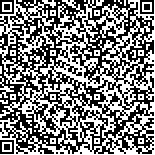下载中心
优秀审稿专家
优秀论文
相关链接
摘要

冰雪在短波区域具有很强的各向异性反射特征,对全球能量平衡及水循环等有重要作用。目前,国内外学者发展了一系列应用于冰雪的二向性反射分布函数BRDF(Bidirectional Reflectance Distribution Function)模型,全面比较和评估这些模型对星载多角度遥感产品的业务化模型选择有重要参考价值和指导意义。本文基于全球POLDER冰雪多角度反射率数据,选取3个模型,包括核驱动、半经验的MODIS业务化RTLSR模型、渐进辐射传输物理模型ART以及新发展的RTLSRS 模型进行了全面比较分析,研究结果表明:(1)在拟合所有POLDER数据时,RTLSRS模型都具有最高精度,对于单组纯雪数据,RTLSRS模型的最小二乘拟合的均方根误差(RMSE)比ART模型降低了45.45%,仅为RTLSR模型的18.46%。对于非纯雪数据,RTLSRS模型与RTLSR模型的拟合能力总体差别不大,但其RMSE比RTLSR模型降低了67.5%,ART模型的精度最差。(2)虽然RTLSRS可以高精度拟合所有数据,但该模型拟合纯雪(R2=0.969,RMSE=0.012)精度较优于非纯雪(R2=0.926,RMSE=0.013)。(3)对RTLSRS模型进行简化,仅保留其各向同性核和雪核ISM(Isotropic-Snow Model),验证结果表明:简化后的模型能够很好地表征雪的二向散射能力,使用POLDER全部纯雪数据进行拟合时,R2达到了0.949,RMSE为0.034。本文有助于用户在应用冰雪多角度数据时选择更合适的BRDF模型,同时对理解这些模型的误差提供了有价值的参考
Snow and ice scatter solar radiation in a strong anisotropic fashion, especially in shortwave region, which, in turn, causes a significant difference in the study of the global energy balance and water cycles. The remote sensing community has developed a series of reflectance models for various applications in snow surface. Comprehensive comparison and evaluation of these models help in choosing an algorithm to produce satellite multi-angle remote sensing product. In this paper, we use the Polarization and Directionality of Earth Reflectances (POLDER) multi-angle snow data to compare and evaluate the performance of three models to characterize snow scattering. Three models including the kernel-driven linear Ross Thick-Li Sparse Reciprocal (RTLSR) model as the Moderate Resolution Imaging Spectroradiometer (MODIS) BRDF/Albedo operational algorithm, the Asymptotic Radiative Theory model (ART), and the lately developed RTLSR-Snow (RTLSRS) model have been well used in studies. First, the POLDER data are divided into pure snow data and impure snow data by the using the homogeneity index provided by the POLDER database. We then use three BRDF models to fit (1) a single pure snow BRDF dataset; (2) the entire archive of the pure snow BRDF data; (3) a single impure snow BRDF dataset; and (4) the entire achieve of the impure snow BRDF data. We analyze the result on the basis of the R2, RMSE and bias. As the volumetric scattering kernel and geometric optical kernel contribute little to pure snow reflectances, we further simplify the RTLSRS model by keeping only isotropic scattering and snow scattering kernel in the kernel-driven model framework (i.e., isotropic and snow-kernel model, ISM). The performance of the ISM model has further been evaluated using the POLDER pure snow data. The results are as follows: (1) The RTLSRS is the most accurate model among all models being considered. For a single pure snow BRDF dataset, the RTLSRS model has an RMSE value that is 45.45% lower than that of ART models and is only 18.46% of that for RTLSR model.For a single impure snow BRDF dataset, the BRDF curve of RTLSRS model is generally similar with RTLSR model’s, but the RMSE is 67.5% lower than RTLSR. The RMSE of the ART model is the largest in this case, arriving at 0.136. (2) The accuracy of the RTLSRS model in simulating the pure snow data (R2=0.969, RMSE=0.012) is higher than that of the impure snow data (R2=0.926, RMSE=0.013). (3) The simplified ISM model can characterize the pure snow BRDF data well. The R2 and RMSE can reach 0.949 and 0.034 for the entire POLDER pure snow data, which is even better than the ART model. RTLSRS has the highest accuracy in fitting various POLDER BRDF snow data. Although the ISM has low accuracy relative to its original RTLSRS model, it shows higher accuracy than the ART model in fitting the POLDER pure snow data. Results present that the index of the “homogeneity” provided by the entire archive of the POLDER snow database cannot necessarily meet the requirement to identify the pure snow pixels of POLDER snow data. Therefore, a new method must be developed to refine the POLDER snow data and provide more details that can improve the understanding for potential users in relation to snow optical scattering.

